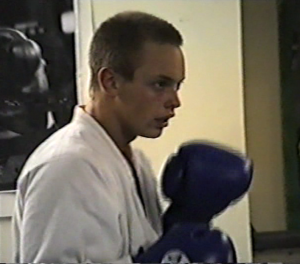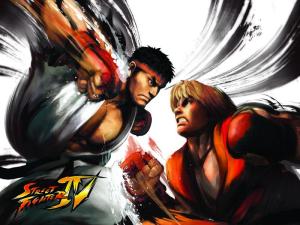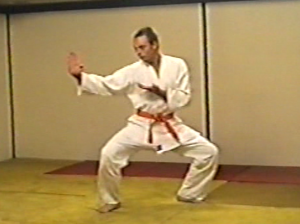Just recently I lost my father, who passed away from natural causes. There are many things I will always regret not coming to pass between us – thoughts unspoken, feelings unshared and stories untold. By writing these chapters, I hope that at least my own son will one day know the story of his father’s journey in life through martial arts.
This is the part of my story where I grow my foundation as martial artist, and meet my oldest brother-in-arms. For the rest of the story, click here.
I grew up in small town in Sweden, deep in the woods of Värmland. There wasn’t much to the town, apart from annually hosting a respectable rock festival and otherwise acting as a hub in the drug trade between Stockholm and Oslo. Aside from the crazies that you find in every neighbourhood, normality reigned supreme. You did of course come across those special individuals whose talents and potential could not be contained or denied, but in such a small place there wasn’t much room or acceptance for what they could accomplish (still isn’t, from what I can see). In other words, not a very welcoming environment for martial arts – virtually all focus was on the national sports of soccer and ice hockey. Nonetheless, some folks did make an effort to keep a couple of martial art schools open – in fact, thinking back it’s quite remarkable how many styles existed in a community of that size.
As a teenager, I was a bit of an outsider. Not from being shunned by society, but rather from not really fitting in anywhere. I had no interest in the common sports, knew nothing of cars and didn’t have the smarts to blend in with the intellectual elite (not much has changed since then). Whenever we had to team sports in school I’d volunteer for one of the defensive positions – it gave me an excuse to not run around as much, and I got to rough it up with the players with the opposing team. I came to spend my spare time riding my skateboard and hanging out with different groups of friends, sort of like a social nomad. Some of the people I knew back then later on went darkside and I kept hearing how they were dropping out of this and that, doing drugs and basically digging their own grave. Now, I’m not going to say that martial arts “saved” me from such a fate, but it sure provided a healthier option of spending my time than hanging out with those misfortunates. We all make our own choices and face the consequences – but it can be good to be aware of your alternatives.
On a hot summer day, I was visiting a friend of mine and was introduced to her boyfriend Jimmy. Turns out that we had already hung out as kids, but it had been years since then and to be honest I couldn’t recall much from those times. So we got to know each other all over again – and as it turned out, we had a lot in common and got along great. In that first meeting our conversation turned to how Jimmy was doing Kempo, and I could feel my interest rising to take up martial arts again. I had never forgotten the joy I had felt when throwing kicks in Taekwondo, and hearing how the Kempo training also had punches, throws and all kinds of other cool aspects to it… I was deeply intrigued.
As this was during the summer holidays – when all of Sweden takes a break to enjoy the annual three weeks of summer – I decided to join the school in the fall when training would resume. In a town of that size, everyone knew each other and there was always gossip and rumours flying around. By taking up martial arts, I got branded as a “ninja wannabe” and was considered as plain weird. This was fine by me; those “cooler” kids could stick to doing burnouts with their Volvos and shooting pucks around ice rinks.
At age 14 I was better prepared to absorb the lessons to be learned from martial arts, and was able to sincerely commit to the training. I was also fortunate in that the school had its own place – the fact that it was a somewhat claustrophobic cellar never occurred to me, and the lack of change rooms or showers didn’t bother me. I was too eager to get onto the mats, hit those pads, grapple with the other students and practise the katas. We had great teachers in Sensei Werner Kleinert and Sensei Pär Olsson, who between them taught us not only the physical techniques but also shared the philosophy and principles through leading by example, being open to answer any questions we may have and sometimes telling us stories. I owe these two teachers many thanks to this day. Sensei Werner would show us the traditional techniques, and how a stylized movement could be applied in a very realistic and efficient manner. This instilled a respect and appreciation of the art. He was also the more spiritual of the two teachers, and showed me how much of a difference a great instructor can make. Unfortunately, I was not aware of how good a teacher he was until later, when seeing other styles’ instructors gave me that realisation (I still try to do him justice when I teach). Sensei Pär was the more practical and progressive one – in a time when Brazilian Jiu-Jiutsu and Mixed Martial Arts was starting to rise, Pär had an open mind and incorporated those techniques that were of most value into our training. As a result, we were moulded into students of good character with solid basics in both traditional as well as modern styles that could defend ourselves in almost any scenario. Looking back, I think the most useful lessons from that time were the knowledge and reflexes in terms of how to fall and roll, and how your hip and waist are properly used to generate power in most techniques – key insights that proved valuable throughout the years.
As my family never had much money, I was fortunate to inherit a hand-me-down Gi to train in (a gi is the traditional Japanese uniform for martial arts) from my Sensei’s younger brother. I remember it being very sturdy, never showing any noticeable wear and tear throughout the years. I still had the white belt from my Taekwondo days so I kept using that for training. As time went on, my passion only grew and when my friend Jimmy got his own key to the dojo we started training together on the days there was no formal training. Looking back, it would have made for a good montage – in the beginning I was pretty weak and couldn’t do even one chin-up. But by training with Jimmy (who gave me good coaching) and consistent dedication, we grew in both technical skills as well as physical ability. Eventually I could pull off ten straight chin-ups, a number of pushups from a handstand position and my flexibility was soon as good as back when I did Tae Kwon Do. Jimmy has always had a knack for teaching and helped me develop some decent boxing skills, honing my kicks and we also spent countless rounds grappling on the mats. We were at the same time training with each other as well as against each other, channelling a supportive kind of antagonism in order to spur the other one to improve. You could say that this time was when my martial arts foundation was developed, and it’s what has helped me quickly learn other styles later on in life.
I never cared much for the bigger picture in terms of what lineage our dojo originated from, but from my recollection our style was Renshinkan Shorinji-ryu Karate Kempo (check out vids here). Over the couple of years I was doing Kempo, there was only one grading. The grand sensei came to visit and there was a workshop as well as a grading. Funnily enough I don’t remember one bit of the grading itself (except getting an orange belt at some point), but I do recall how the master taught us a new kata – apparently he had named it Kaminokaze, meaning ‘Wind of the Gods’. It was a kata that he had created himself, and he seemed to take great pride and joy in teaching us. What I noticed though was that as he was going through the techniques and their application, he seemed to break all the rules and principles that you’d find in the other katas. Over the years I’ve noticed this behaviour in other highly graded martial artists, and there is a lesson to be learned there – rules and principle are made for a reason, but once you understand the reason well enough you develop a sense for when and how those rules can be ignored – or broken. Something to ponder as one learns the arts…
Another memorable event from the Kempo days was when Sensei Pär organised an internal tournament which featured katas, sparring and grappling. I think I was 17 at this point. Due to family reasons, Jimmy was occupied elsewhere and could not participate. On the morning of the competition, I decided that I would need a lot of energy – so I had a pizza for breakfast, earning me some weird looks from my sister. This was my first competition, so in spite of its informality I was pretty damn nervous. The first event was standing up sparring, where I did ok by winning my first fight against a senior belt – but then got thoroughly beaten by a senior brown belt. Considering the guy was several years older, in peak shape and superior to me in every way, I’m actually quite happy I went through the fight without giving up. It was then time for grappling, where Lady Fortune spat in my face by matching me up against that same brown belt. It didn’t take long before he had me in an armbar, where my strength and flexibility could not save me and I had to tap out. This was deeply frustrating to me, as I normally did fairly well in the grappling bouts (this lead to me training armbar escapes for so long that no-one ever got me with it after that). Last event was katas, where I finally could redeem some dignity by performing my form well with decent technique and mindset. There were no trophies, certificates or any recognition of any kind from this tournament but it was nonetheless exciting to put yourself out there and challenge yourself. It is also a good example of how we often grow more out of losing than from winning.
Not long after that the school shut down, the exact reason to this eludes me. I think it was due to both our teachers needing to devote more time to family and careers. This seems to be the lifecycle of most schools – you can be the most formidable teacher ever, but if there is no one to keep carrying the torch after you then it’s a matter of time before the school dies out, like water on the sand. The small town situation will work against you as well, as most young adults that dedicate themselves to the training will often leave town to pursue further education, job opportunities and see the world. For a teacher, I imagine it must be frustrating to see all your time and effort spent on cultivating students seemingly lead to nothing when they leave for greener pastures. Hopefully those teachers see this from a bigger picture point of view – the students that leave are taking their lessons with them, and throughout their own journeys they will draw on what you taught them and keep growing thanks to their solid foundation. And who knows, maybe one day they will start up their own school in some remote town and share their knowledge with new students.
As for me, the school closing down left me without a second home. As the concept of not doing martial arts was not an option, I had to look elsewhere…
Footnote – my friend Jimmy was one of those who left town for further studies, but he kept training through the years and is now a certified Personal Trainer as well as martial arts instructor in both Capoeira and Kickboxing. He moved back to our home town and opened up a bona fide center for martial arts, complete with a gym and massage facilities. Living the dream, if you ask me. Check out his Facebook page!
– Lobo






Pingback: Robert JR Graham » The Quality of Martial Arts Instructors
Pingback: Defeating Big Mike | Lobo's Blog